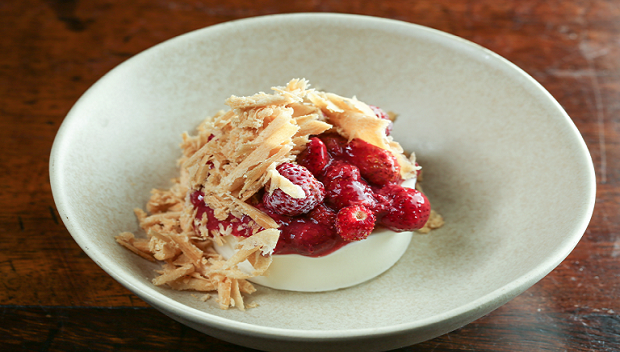Delicious and nutritious packed lunches
Tips for making your packed lunch healthy, delicious and something to look forward to

Our resident nutritional advisor and health coach offers some top tips on how to maximise the nutritional value of your lunch with minimum preparation and fuss.
1. BALANCE

Make sure that every lunchbox includes all three main food groups – carbohydrate, protein and fat. Approximately 60 per cent of your meal should be slow releasing carbs, to ensure enough energy to see you through the afternoon; these can be found in fruit, vegetables, whole grains and pulses. Eat plenty of protein too; it is essential for the growth and repair of body tissue. Protein-rich foods include eggs, quinoa, beans and lentils, fish, soya, meat, cheese, nuts and seeds.
Fats come in two types: saturated fat, which is normally found in animal products such as meat and dairy products, and unsaturated fats. It is the unsaturated fats that are good for us and, in fact, essential ingredients for overall mind and body health. These are typically found in oily fish, nuts and seeds (such as sunflower, pumpkin or chia). Try to include a tablespoon of seeds in your diet each day.
2. PORTION SIZE

It is important to keep an eye on portion size. Choose the Tupperware to suit your portion rather than feel you have to stuff full any size box you happen to pluck from the cupboard. As a rule of thumb, the starchy carb element of your lunch (think grains, rice, pasta, pulses) should be about the size of the palm of your hand. Meat and dairy-derived protein can contain a lot of saturated fat, so keep an eye on portion size when eating food from this group in particular. Load up the dish with green leafy veg, salad ingredients and fruit.
3. VARIETY

Try to include at least 8 different food ingredients and at least 4 different colours of foods in your packed lunch, to ensure it is jam-packed with vitamins and minerals. Throw it all together and don’t get too hung up with what food conventionally goes with what. Unusual mixes of ingredients can taste surprisingly good.
4. SWEET TREATS AND SNACKS

To fix a mid-morning or afternoon energy slump, try oatcakes with hummus or soft cheese, or a piece of rye bread with peanut butter (no added sugar). For the record, rice cakes, which are a lot of people’s go-to snack, can actually be high in refined sugar, so try to choose organic brown rice cakes when looking for a healthy option. As for moments when your sweet tooth takes hold, avoid sugar-laden granola bars – instead, try yoghurt with fruit, nuts and seeds, topped with a teaspoonful of honey.
5. WHAT TO STOCK IN YOUR FRIDGE OR FREEZER

We’ve all had a go at drumming up a cheap and cheerful packed lunch by recycling last night’s leftovers, or flinging the old piece of cheese or ham, winking at you from the back of the fridge, into a sandwich that will almost certainly be squashed and unappealing by the time you get to work. Instead, just make sure you put together a few of the easily sourced ingredients suggested below.
Non-refined Carbs:
Veg: courgettes (grated and raw), carrots, kale and beetroot are all great lunchbox ingredients. A dollop of hummus falls into this group, too.
Salad basics: cucumber, peppers, tomatoes, salad leaves and spinach.
Fruit: berries, oranges, pomegranate seeds and avocados (which are high in antioxidants).
Protein:
Cheese: goat’s, sheep’s and cottage are three that are low in fat.
Natural yoghurt, eggs, cooked seafood, soy and tofu are good, too. It's also always a good idea to have some broad beans or edamame beans tucked away in the freezer.
WHAT TO STOCK: CUPBOARD

For those occasions when you truly have eaten the fridge bare, make sure you keep some essentials in the cupboard. A meal can be concocted from these alone, if necessary.
Protein:
Stock up on tinned fish (tuna, mackerel, sardines), nuts (or nut butter) and seeds.
Carbohydrate and protein:
Look to tinned chickpeas, beans, lentils and quinoa.
Non-refined Carbs:
Grains (such as brown rice), oats, spelt, couscous, oatcakes and rye bread are all healthy options. Sun-dried tomatoes, capers and honey also fall into this category.
Fats, unsaturated:
Olives, nuts and seeds are all great examples of healthy unsaturated fats.
For personalised taste, you can also keep your own mini supply of condiments at work to spice things up. Chilli flakes, turmeric (the wonder anti-inflammatory spice), Himalayan salt, mixed seeds and dried cranberries can all add zing to satisfy the taste buds.
by Annabel Arkwright

![Kyseri: Selin Kiazim brings Anatolian cuisine to London [5star]](/images/thumbs/cw-28343-660x375.jpeg)




